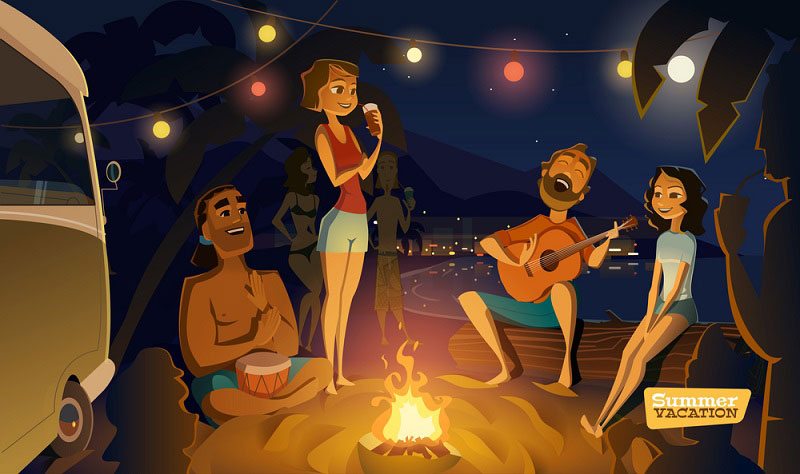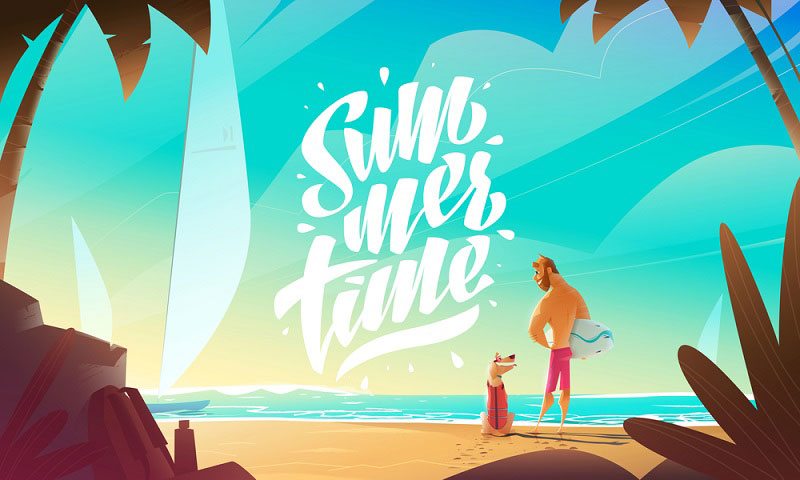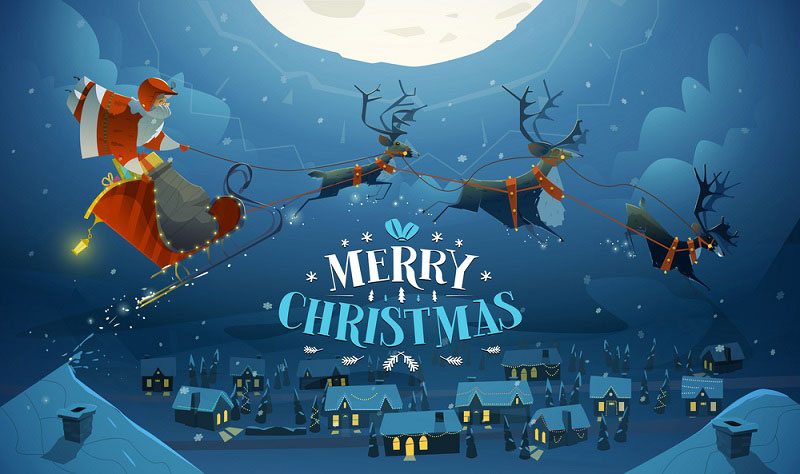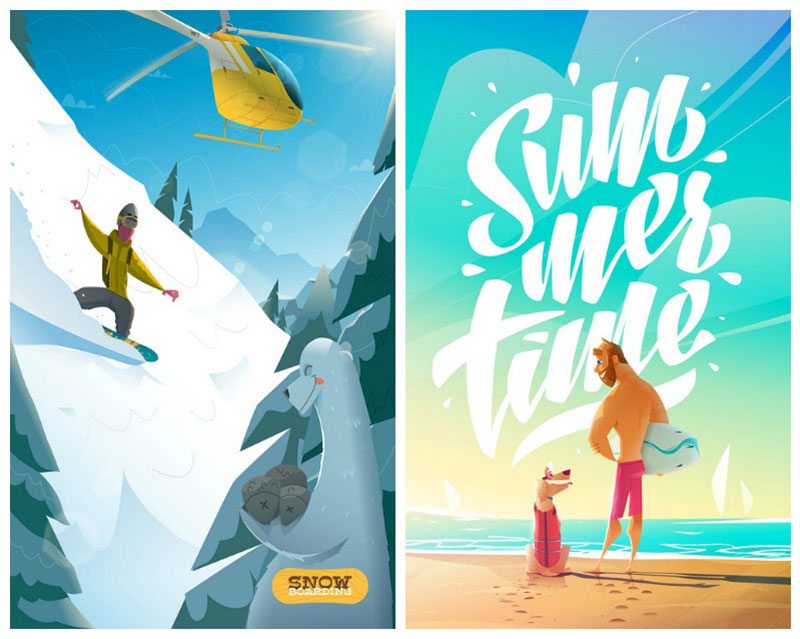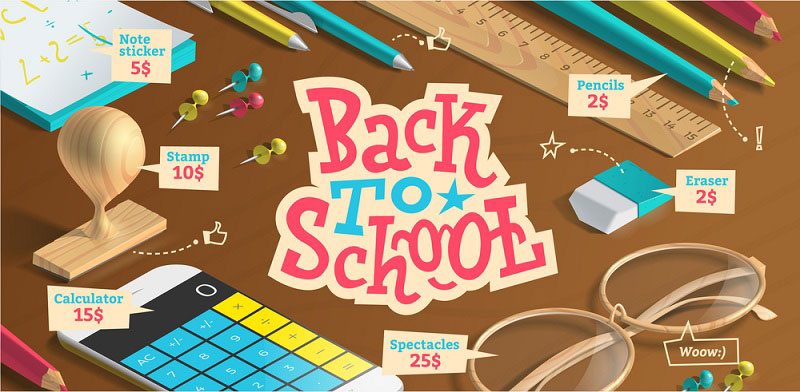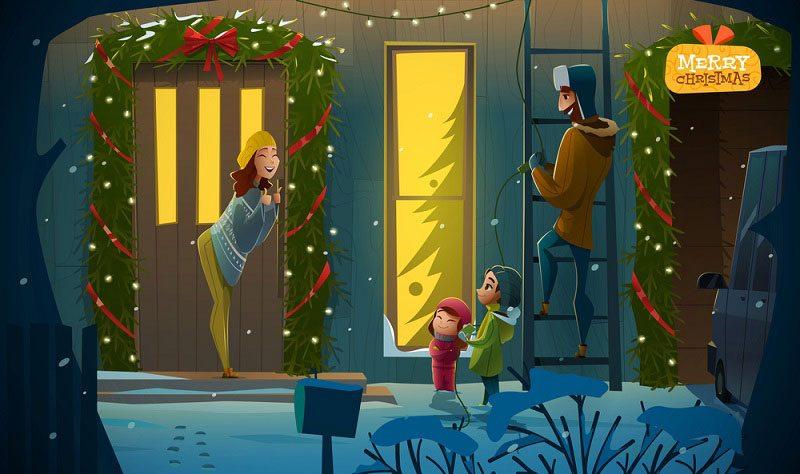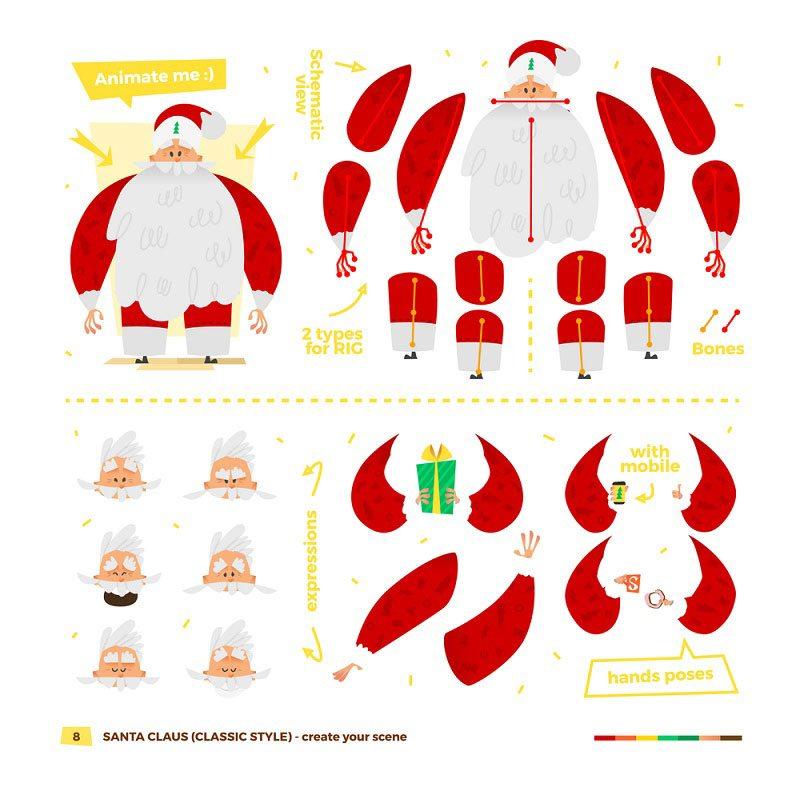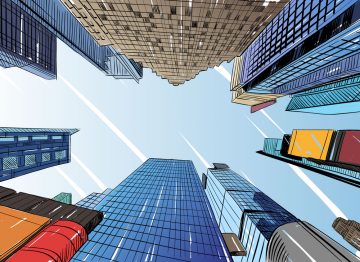How Illustrations are Made: Interview with Aleksandr Prokofiev
Every artist’s journey to finding their creative side is fascinating. Aleksandr Prokofiev expressed his tendency towards the arts at a young age. Here is his story and a special tutorial on how illustrations are created.
“I was born in a wonderful, small city of Enerhodar. This is where I spent my childhood and my youth. During this period I wasn’t so keen on drawing, although I did show some interest. This was evident with subjects like drafting and geometry. But more captivating was my interest in music; playing the drums was a continuous hobby during my studies at university and while working at a production studio.”
Aleksandr made the move to a big city, pursuing a degree at the National Aviation University in Kiev. Knowing it wasn’t what he wanted to do, he left and worked at a production studio where he remained for the next 5 years. This was the place where he gained skills in 2D and 3D arts.
The change of scenery and a taste of a different career path led Aleksandr to pursue a degree in design on the side. Only when he’s stepped on the right path was he able to start a solid foundation to his future career. Having left the studio when he completed his studies, Aleksandr started working as a freelancer.
Experiencing a level of freedom like never before, Aleksandr was off doing his own thing when he stumbled on an article that edged him in a new direction. This article described all the benefits for graphic designers in the field of microstock. Giving it some serious thought, Aleksandr dove head first into a field he knew little about but was able to succeed due to his experience as an illustrator.
“It’s worth mentioning that I’ve been married for 2 years and am now a father. Working with microstock really helps with your family life – you always have the opportunity to devote time to your family, and not just on the weekends. Whoever invented stock – love you.”
What inspires you to create your works?
I love depicting and illustrating simple life situations. Having to draw these moments almost seems like you’re reliving them. It’s pleasant emotions which inspire me. These situations are what you see everyday but don’t notice.
I love including humor, it breathes new life into my work. I’m also really inspired by animations from studios like Pixar, Disney, Dreamworks, Sony Animation etc. I’m a big fan of animations by Cartoon Saloon – Song of the Sea (left) and The Secret of Kells (right). They’re really insightful as lessons on stylization, color, light, lines, forms and so on.

Was there a time when you’ve faced an artist’s block? How did you overcome it?
Yes, these things happen. Mainly, they’re related to work overload. It’s important to take breaks, go on walks, take a ride somewhere, do some sports, meditate, meet up with people and just talk.
I will tell you thought, that if you stick to a healthy routine, you lessen the likelihood of getting an artist’s block. There are times when you develop other interests that may overpower your desire to draw and work. I think that’s normal. We live for the different experiences, don’t we?
What does an average day in your life look like?
My routine is pretty much family – coffee – work – family, walks – work. Of course, it depends. Every day is somehow memorable. For example, you can add ‘shower’ to this list 🙂
What are 3 things you can’t live without?
Spirit, soul and body. To be honest, I haven’t thought about it. I would have to say it’s creation, humor and paradox. I can say that, right?
What message do you try to convey with your works?
As I’ve mentioned earlier, it’s humor above all else. I love ‘warm’, life-like scenes. I love translating a specific moment that appears almost photographed. Emotions, actions, color and light – all these things have to look unified and believable.
How should one go about developing their personal style in illustration?
Style is you, above all else. The way you view the world, how you react to it, what you hear and how you react to it.
Lets draw an example here of how I imagine style works. Let’s take (hypothetically) the ink part of the pen. Lets mix into it your personality, your favourite music, food, color, forms, favourite places, countries, any other preferences and so on. Now lets mix the ink, put it back in the pen and start drawing. Everything that will result from it will be your style – it’s you.
The actual ability to draw comes from practice but you will already have your preferences with lines and forms. Therefore your ink and your experiences will determine your style.
What are some useful tools to get started in illustration?
Well first of all, there’s coffee 🙂 But really it’s any paper, sketchbook, pencil, brush pens (if you want to do lettering), Wacom pad, Photoshop, Illustrator. That’s about it.
I’ve had some experience with working in 3D to help me adjust the perspective right and place the object in the right spot. It helps to speed up the process.
Could you take me from start to finish of one of your favourite works? What is the whole process like and how long does it take you?
Almost every piece of work starts with sketches. For an example, I’ve prepared a brand new illustration to show you – it’s Santa. I like working in Photoshop on my Wacom pad, it’s really convenient. There’s also functions like Ctrl+Z and Layers. The first stage is in this program – the search for style, character, personality, forms, lines and the like.
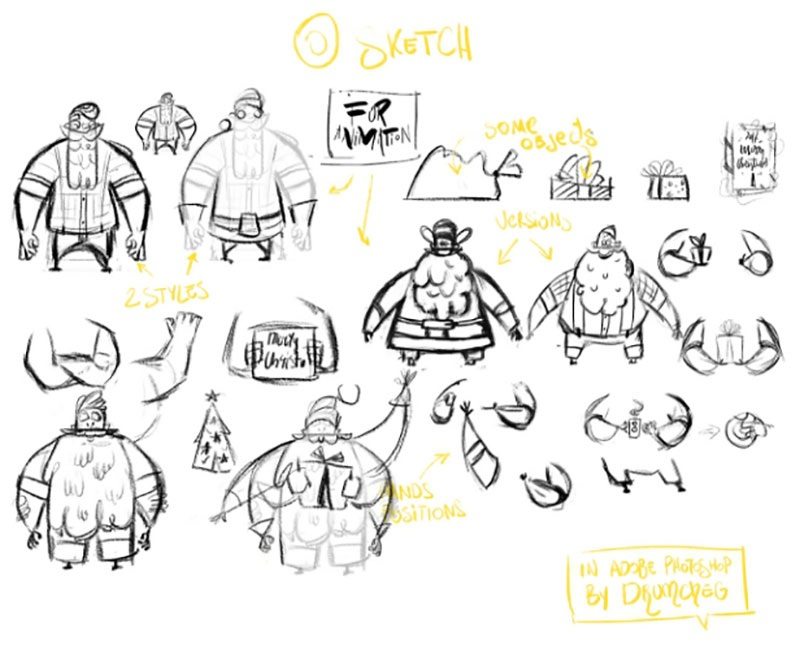
This stage is when all the creativity truly happens. The sketching part is an important stage. The next step is drawing out the sketch in Adobe Illustrator. Usually I use the “Pen Tool” for all these objects.
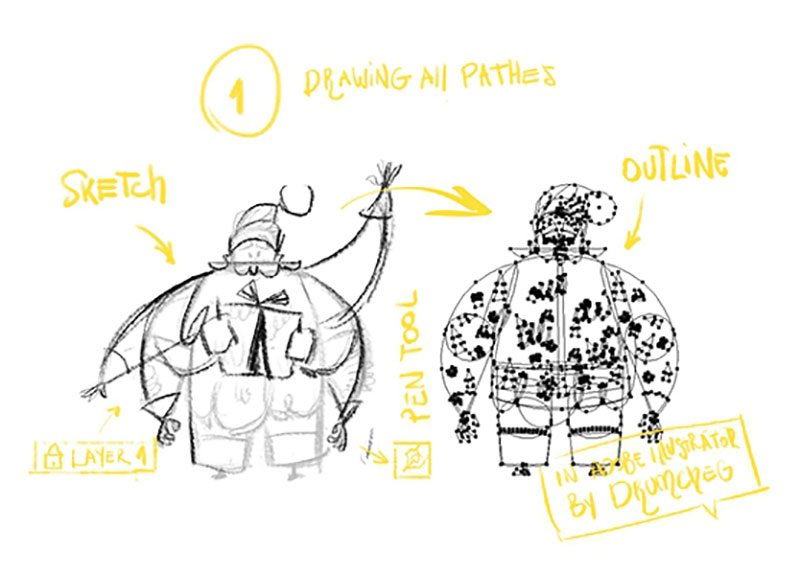
After all the forms are drawn, I choose colors. As the theme is Christmas here, I chose a classic color palette – red, green and yellow.
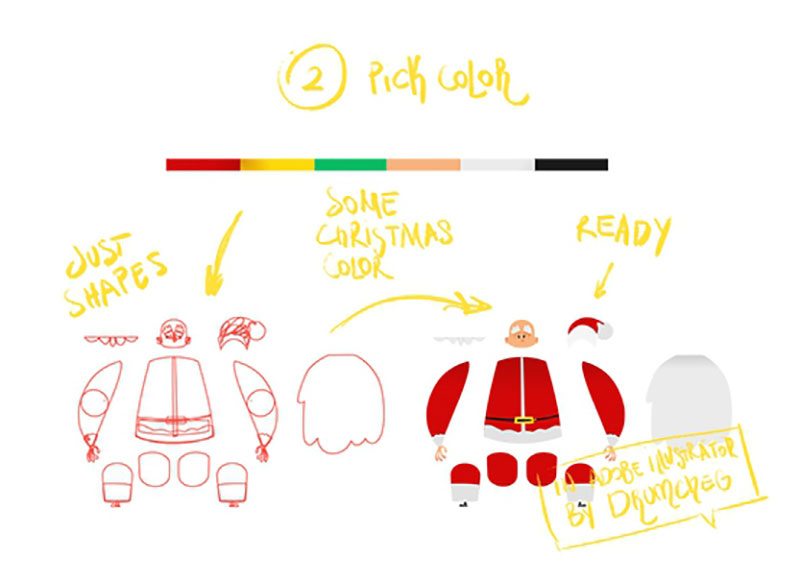
Afterwards, I add important details which will add style to the character I’m creating. This is also quite an important point in the process. Thanks to it, the work will look more interesting.
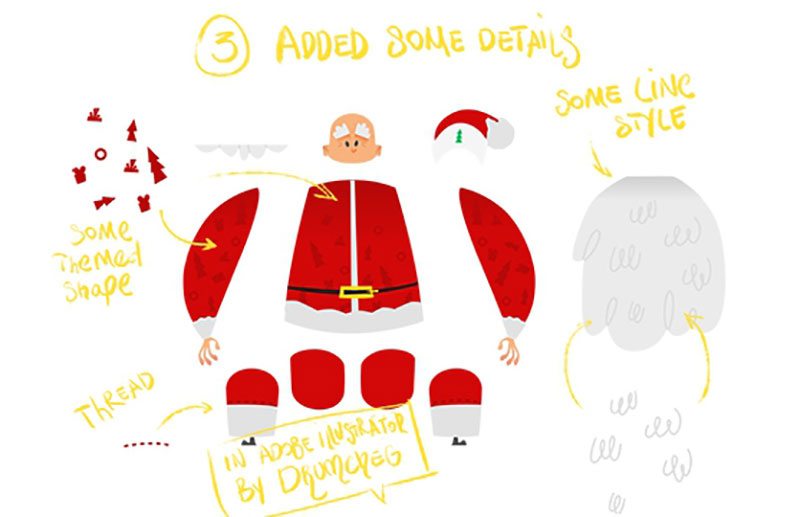
Next comes the final stage. The work begins to take on a more finished look and is sent to virtual stock stores. This one and other Santas will soon be available for purchase on Depositphotos.
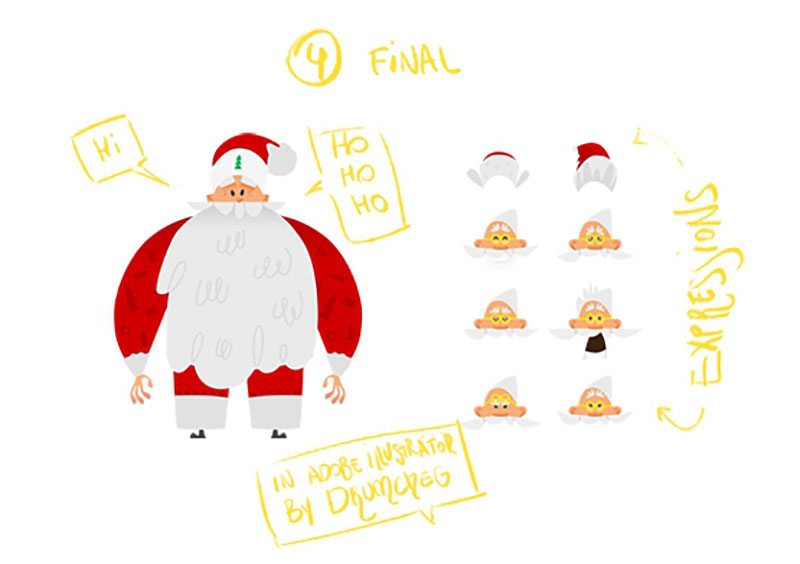
Now you can create a set with emotions and the direction of the hands. Plus, you can add separately the parts of the body specifically for animation. You can already purchase this image if you visit my portfolio page.
This is the whole process (in a nutshell) that follows the development of illustrations.
Your illustrations have a beautiful animation-like feel to them. Do you pursue any other art forms?
When I was working at a production studio I had to go through all the stages – from 3D modeling to text creation, animation and special effects. At the moment I don’t pursue these art forms as my interests have moved on to stock agencies where it’s simpler and faster to create illustrations.
Everyday I try to draw something new, on my drawing pad or Photoshop but it doesn’t always make it to the realms of the Internet.
You can find more of my works on my Instagram page and my Pinterest account.
Thanks everyone and keep up the creativity!
